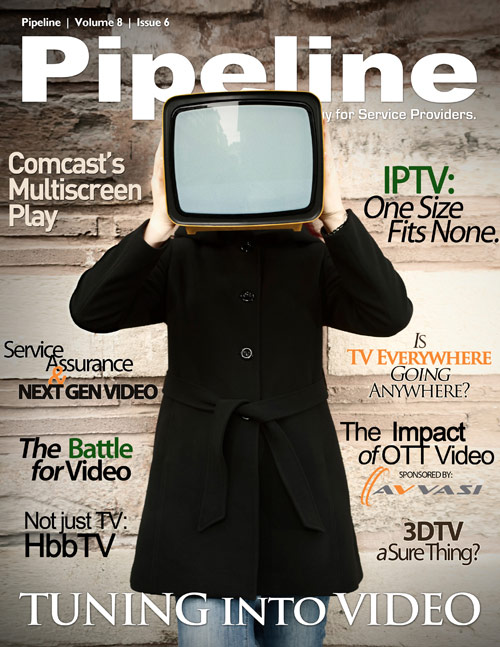By: Jesse Cryderman

Welcome to the Post-PC Era
Sandvine just released the Fall 2011 Global Internet Phenomenon report, and despite a public fracas over increased pricing, Netflix consumption shows no signs of slowing. During peak hours, more than 32% of North American internet traffic is generated by Netflix, up 10% from this spring. This is due in part to the beginning of the “post-PC era,” says Sandvine, characterized by a proliferation of IP-connected devices that, in aggregate, stream more internet data than PCs. Netflix has very effectively taken their content to the subscriber, wherever the eyeballs are, by aggressively rolling out apps that stream content to a multitude of devices.
Beyond highlighting obvious challenges for video service providers looking to square off against the likes of Netflix, the report found that real-time entertainment applications, which make up 60% of peak downstream traffic, are the primary network capacity drivers. At the same time, monthly usage per subscriber is levelling off. Since OTT services like Netflix, Hulu, Amazon Prime, and others use adaptive bitrate streaming (ABR) to manage video quality, when more capacity is added, ABR simply jacks up the fidelity of the video stream for current users.


In other words, if per-subscriber usage trends stay flat, “investing to deliver increasing bandwidth no longer makes sense; rather, networks might soon be engineered to deliver a constant quality of experience,” wrote Sandvine in the report. “To do so effectively, communications service providers will need to look beyond bytes and into metrics that matter, like video quality of experience.”
- The peak internet traffic period on fixed access networks has condensed from two-and-a-half hours to two hours over the past six months.
- “Monthly usage quotas have only a limited impact, if any at all, on peak network demand; however, quotas that differentiate between peak and off-peak might have a larger impact.“
- Over the top messaging services may soon impact providers' SMS business. The “average revenue per delivered byte is dropping, as SMS bytes, estimated to be generally $30,000/GB, are being replaced by over-the-top bytes that deliver a revenue on the order of $10/GB.”
- Peer-to-peer multi-casting, or peercasting, in Asia-Pacific has resulted in real-time entertainment becoming the largest upstream data category as well as downstream.
Dave Caputo, CEO, Sandvine, commented on the report: “The fact that more video traffic is going to devices other than a PC should be a wake-up call that counting bytes is no longer sufficient for network planning. Communications Service Providers need to have detailed business intelligence on not only the devices being used but also the quality and length of the videos being watched so they can engineer for a high subscriber quality of experience and not simply adding capacity through continuous capital investment.”
Third Quarter Earnings Roll In
Just as we were going to press, third quarter results began to come in from several major service providers in the US.








